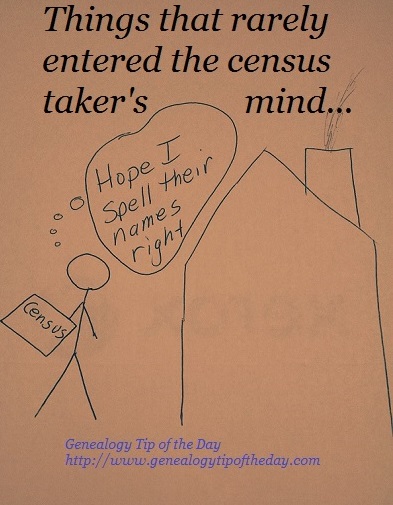There can be much gnashing of teeth about what spelling is “correct.”
It is important to remember that 20th and 21st century concerns over spellings and names matching exactly were not a concern in an earlier time. In some places they were not even a concern in the early 20th century.
Documents should be transcribed as they are written, even if the name is not spelled “right.” If a census spells great-grandma’s name as “Fany,” that’s how I transcribe the document for my records. Because that is what it said. If my great-grandma’s birth certificate spells her name clearly as “Francis,” then that is what I transcribe the record as. I don’t change it. If great-grandma herself always signed it as Fannie and that’s what most of her records referred to her as, what she had on her tombstone, and what everyone referred to her as–then that’s how I refer to her when writing about her.
I don’t get in a tither when a document writes her name as “Frannie.” I make certain it is her (comparing other details in the document to what I know about her), I transcribe it exactly as it is, make a notation, and move on.
In the rite of transcription, one is right to transcribe “Wright” as “Right” if “Right” is how it’s spelled on the record. One of the rites of solid research is to to write, separate from the transcription, our own commentary about the “right” spelling.









One response
I record the name in the birth record then any nicknames in quotes.